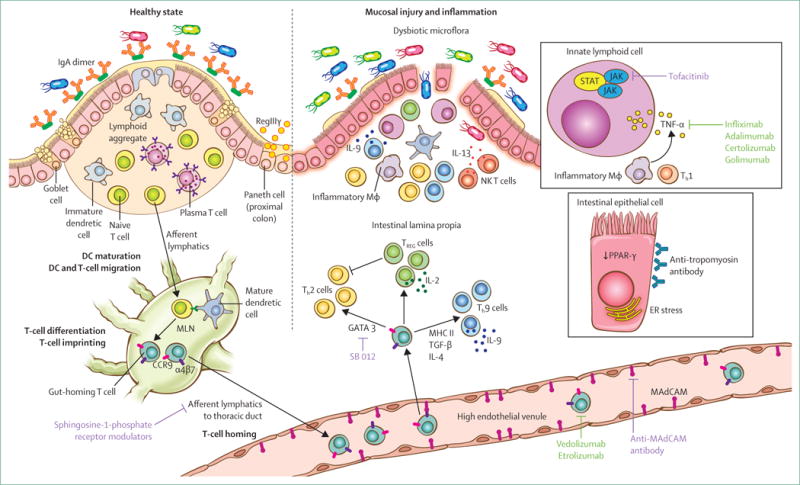Figure 2. Overview of the intestinal immune system in the healthy state and for ulcerative colitis with a focus on proven and promising therapeutic targets.

During the healthy state, barrier function is maintained by the mucus layer and epithelial cells bound across tight junctions. Additionally, IgA and antimicrobial factors such as RegIIIγ sequester luminal microflora away from the mucosal immune system. Specialised antigen-presenting cells such as dendritic cells process and present antigen to T and B cells within the draining lymph nodes, defaulting to a tolerising phenotype. Intestinal DCs also imprint T and B lymphocytes to express gut-homing molecules α4β7 and CCR9. Lymphocytes thus imprinted within the gastrointestinal tract enter the systemic circulation and upon reaching intestinal high endothelial venules, the gut-imprinted, α4β7-expressing lymphocytes engage locally expressed MAdCAM and egress the circulation to enter into the intestinal lamina propria. Coordinated activity of innate and adaptive immune cells maintains homoeostasis within the intestinal mucosa at steady state. Ulcerative colitis is associated with damage to the mucosal barrier (inset), allowing the luminal microflora to trigger a sustained and uninhibited inflammatory response. Among the inflammatory cells, TH9 cells perpetuate enterocyte apoptosis and inhibit mucosal healing. IL-13, produced by NK T cells, also contributes to epithelial injury. Additionally, innate lymphoid cells (inset), homeostatic at steady state, contribute to the cytokine production, perpetuating inflammation. Mucosal injury and damage is associated with dysbiosis, which perhaps contributes to the inflammatory cascade. An increasing understanding of the mucosal immune system has led to an expanding array of therapeutic targets. Of these, TNF-α antagonists and homing inhibitors are currently in clinical practice (green text), while the others are in early to advanced stages of clinical development (purple text). Illustration by Jill Gregory. Printed with permission of ©Mount Sinai Health System. IgA=immunoglobulin A. DC=dendritic cell. MAdCAM=mucosal addressin cell associated molecule. IL=interleukin. Th=T-helper cell. TREG=regulatory T cell. IFN=interferon, Mϕ=macrophage. TGF=transforming growth factor. ER=endoplasmic reticulum. MHC=major histocompatibility complex. NK T cell=natural killer T cell. MLN=mesenteric lymph node.
